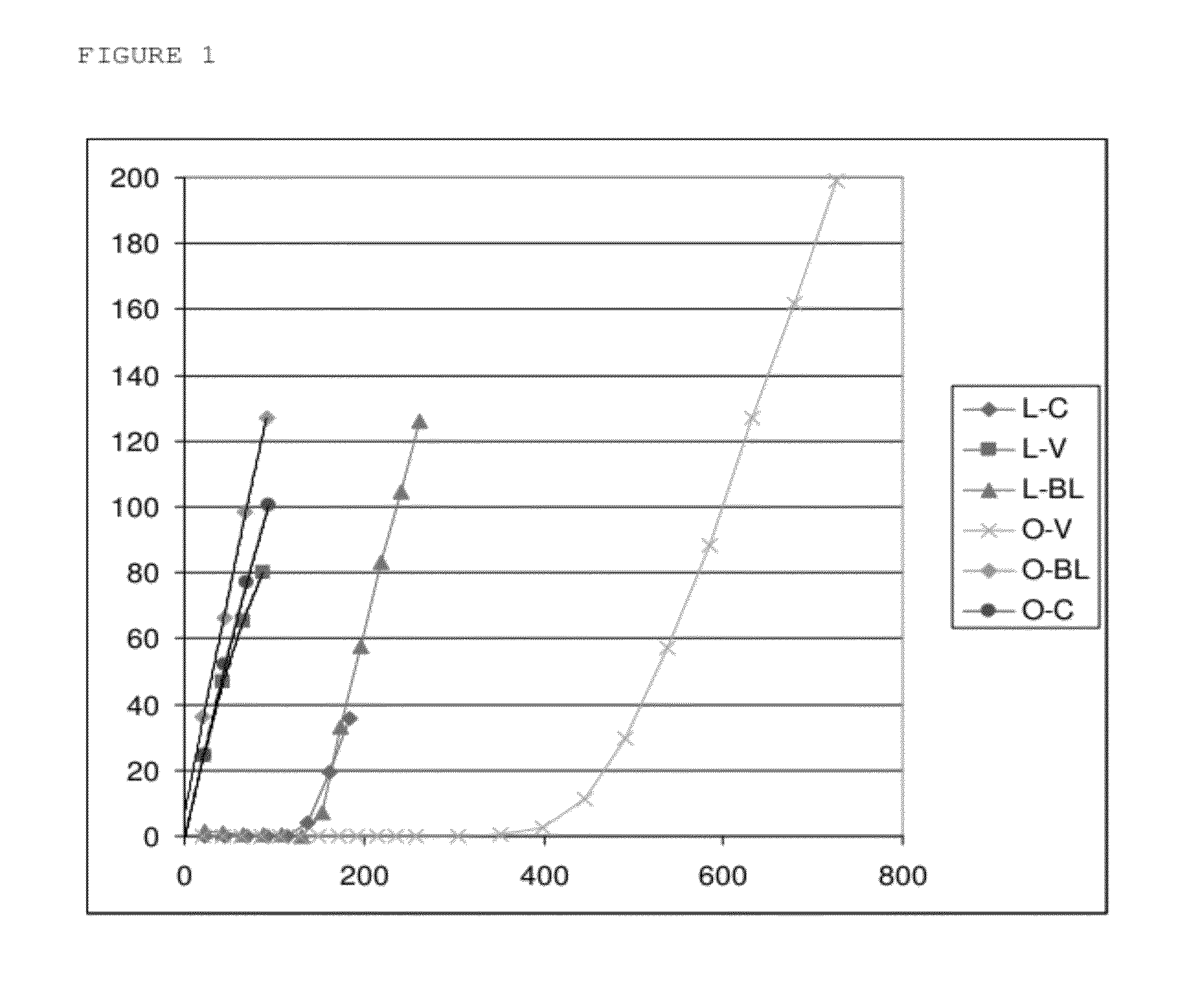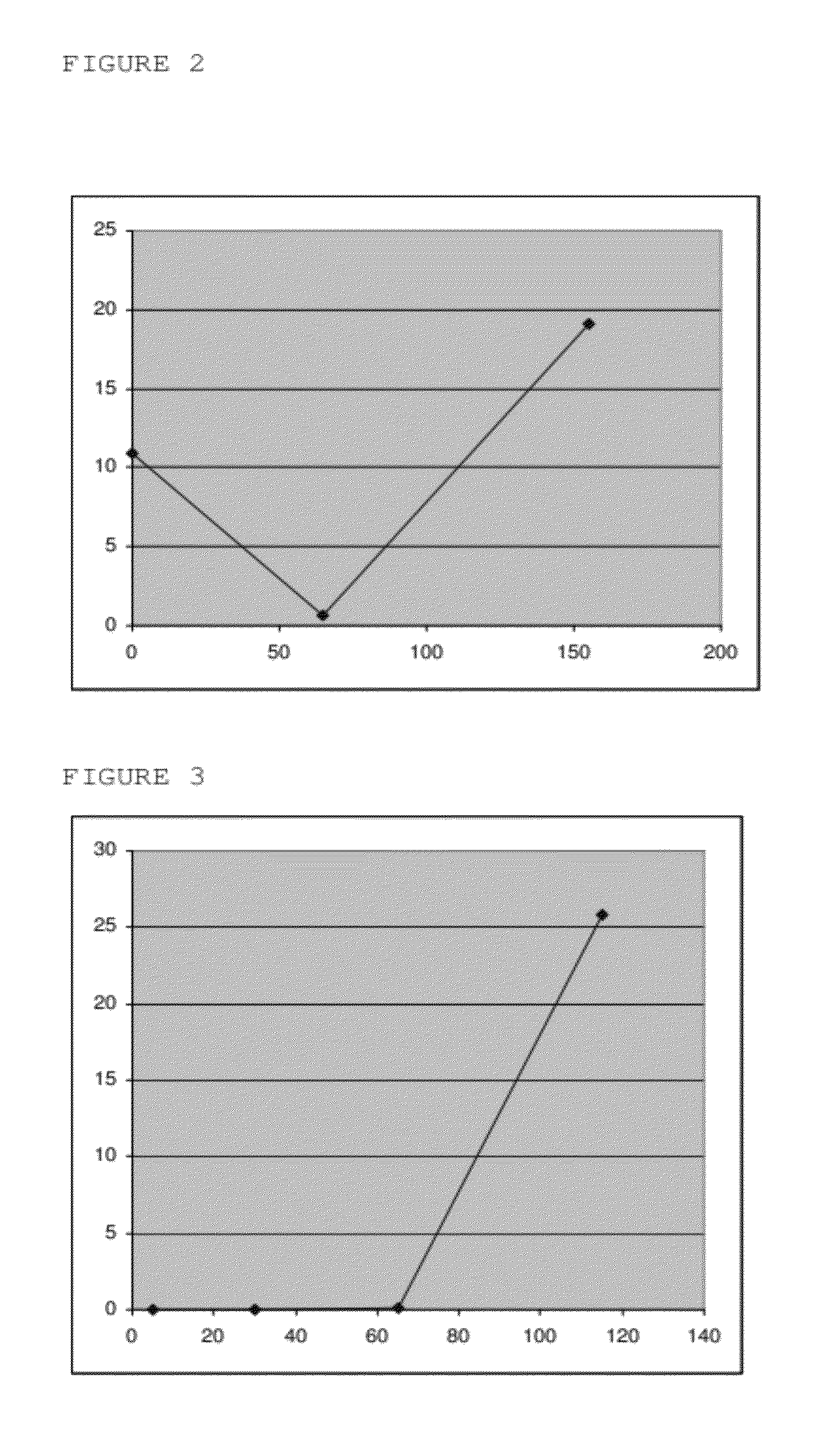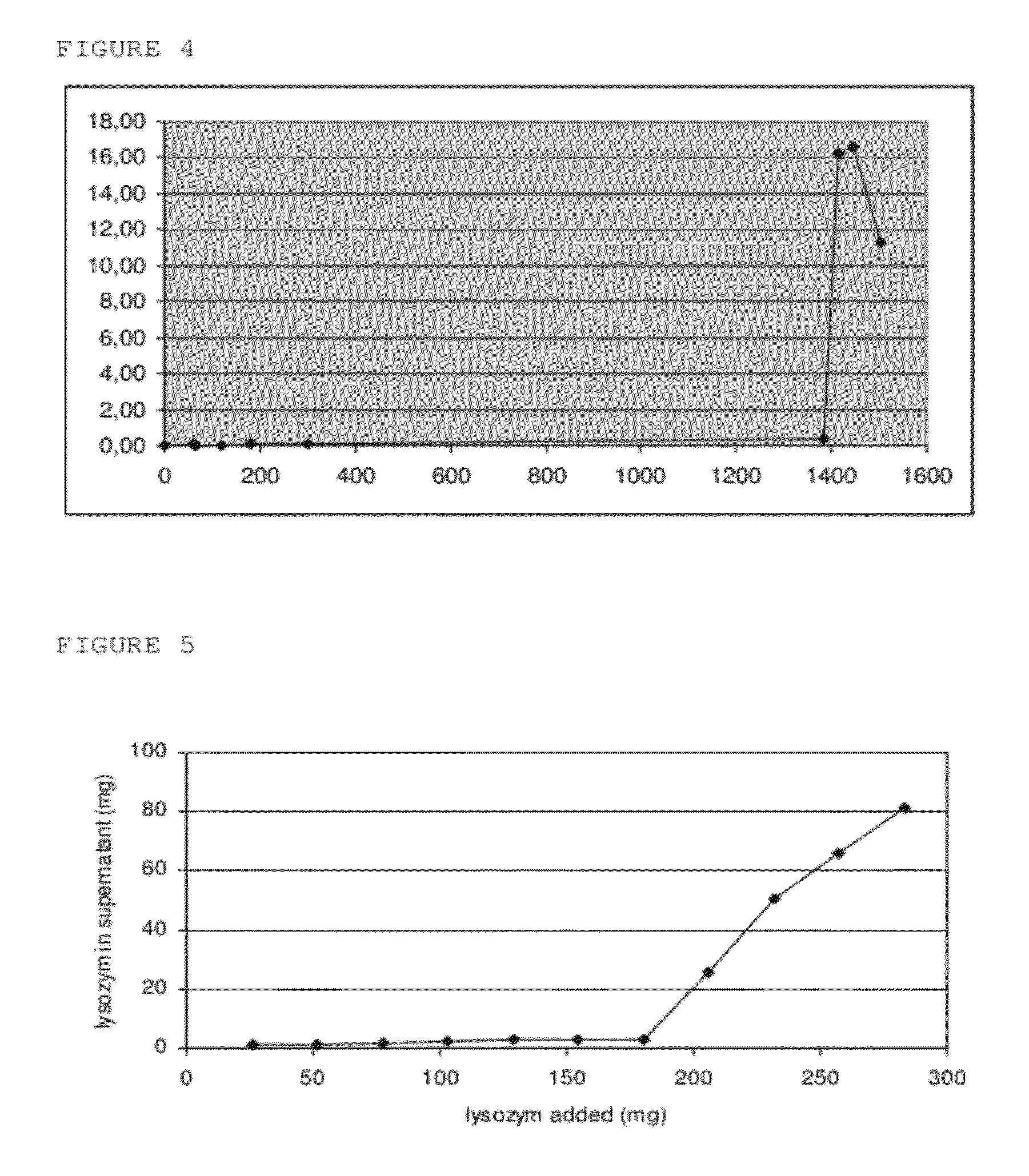Inducible release vehicles
a technology of inducible release and vehicle, which is applied in the direction of biocide, drug composition, peptide/protein ingredients, etc., can solve the problems of unusable packaging for preventing food decay, continuous release of components or continuous contact with foods, and unfavorable skin exposure to antimicrobial agents, so as to prevent unnecessary exposure of wound tissue to antimicrobial agents and prevent undesired skin exposure
- Summary
- Abstract
- Description
- Claims
- Application Information
AI Technical Summary
Benefits of technology
Problems solved by technology
Method used
Image
Examples
example 1
Synthesis of Gel A
[0081]A solution of 54 mg of NaOH in 90 mL of water was brought to a temperature of 0° C. To this, 600 μl of divinyl sulphone (DVS) were added. Then, 15 grams C6-oxidized starch having a degree of oxidation (DO) of more than 90% was added slowly with vigorous stirring. The solution changed overnight into a soft and virtually colorless transparent gel. This gel was pressed through a sieve with meshes of approximately 1 mm2, after which 1 liter of water was stirred through the gel, which water was absorbed directly. After this, the gel was precipitated using 2 liters of ethanol and was then washed twice using ethanol and once using acetone, after which the gel was air-dried. This resulted in 12.1 grams of gel having a free swelling (net weight divided by dry weight) of 59 in water.
example 2
Synthesis of Gel B
[0082]Synthesis and further processing as gel A, but using C6-oxidized starch having a DO of 50% instead of more than 90%. This resulted in 9.78 g of gel having a free swelling of 51 in water.
example 3
Synthesis of Gel C
[0083]To 89 mL of ice water, 1.00 mL of a NaOH solution, obtained by dissolving 539 mg of NaOH with 10.1 mL of water, was added. To this, 800 μl of DVS were added. Then, 10 grams of C6-oxidized starch (DO 30%) were added slowly with vigorous stirring. The solution changed overnight into a hard and virtually colorless transparent gel. This gel was pressed through a sieve with meshes of approximately 1 mm2, after which 0.5 liter of water was stirred through the gel, which water was absorbed directly. After this, the gel was precipitated using 1 liter of ethanol, and then washed twice using ethanol and once using acetone, after which the gel was air-dried. This resulted in 9.02 grams of gel having a free swelling (net weight divided by dry weight) of 49 in water.
PUM
| Property | Measurement | Unit |
|---|---|---|
| temperature | aaaaa | aaaaa |
| size | aaaaa | aaaaa |
| temperature | aaaaa | aaaaa |
Abstract
Description
Claims
Application Information
 Login to View More
Login to View More - R&D
- Intellectual Property
- Life Sciences
- Materials
- Tech Scout
- Unparalleled Data Quality
- Higher Quality Content
- 60% Fewer Hallucinations
Browse by: Latest US Patents, China's latest patents, Technical Efficacy Thesaurus, Application Domain, Technology Topic, Popular Technical Reports.
© 2025 PatSnap. All rights reserved.Legal|Privacy policy|Modern Slavery Act Transparency Statement|Sitemap|About US| Contact US: help@patsnap.com



